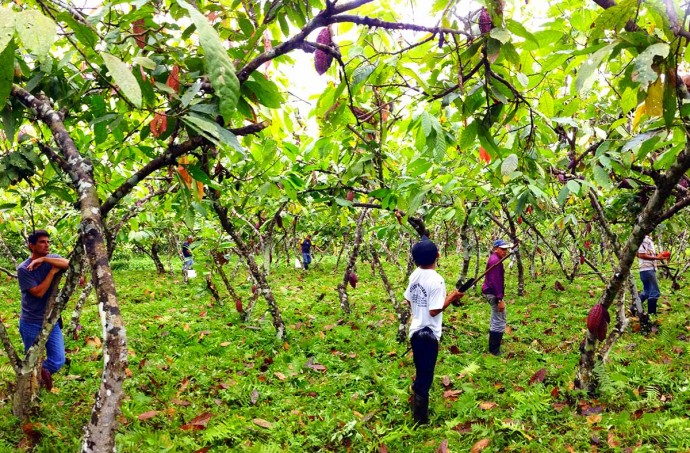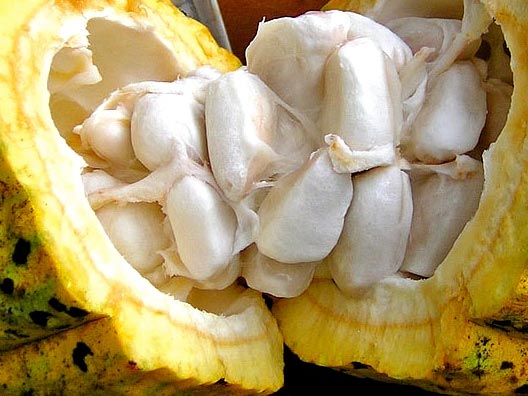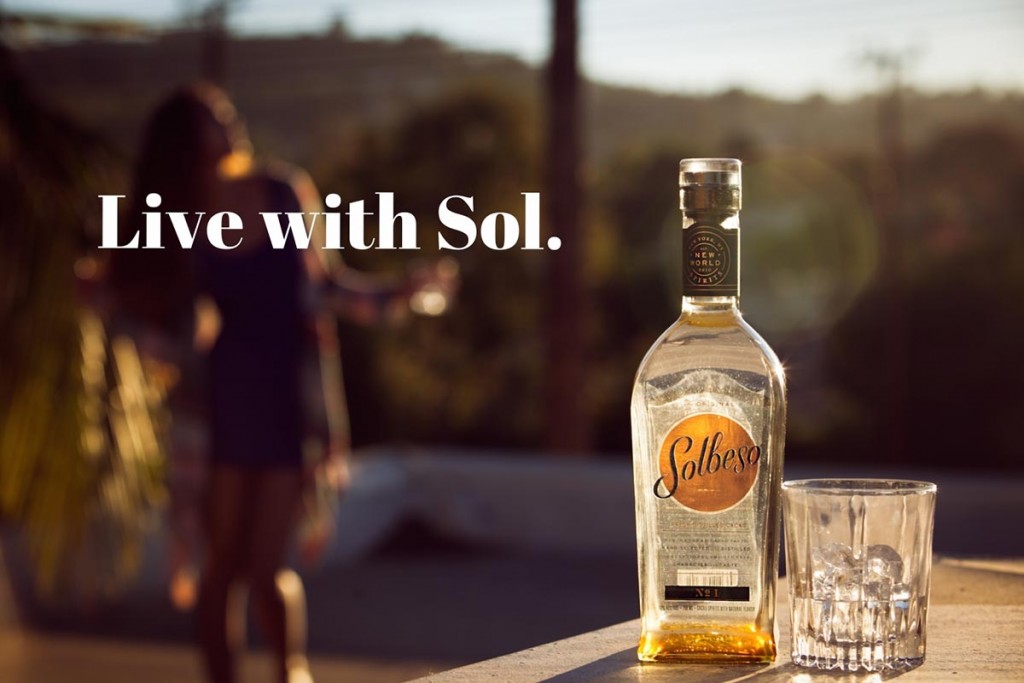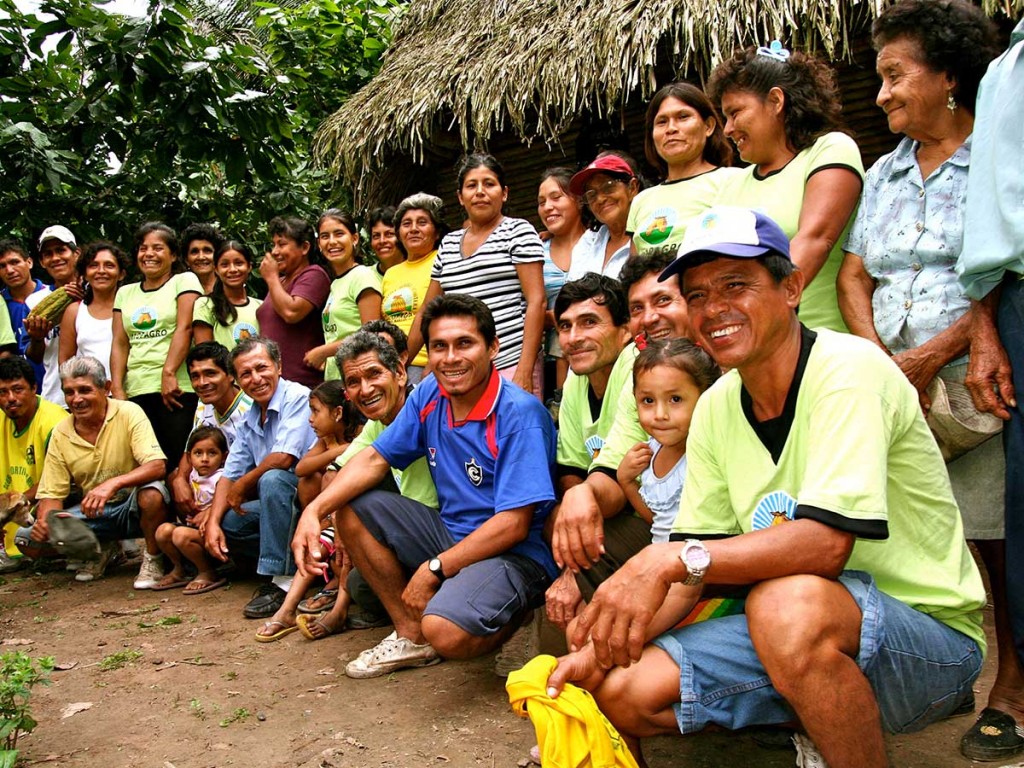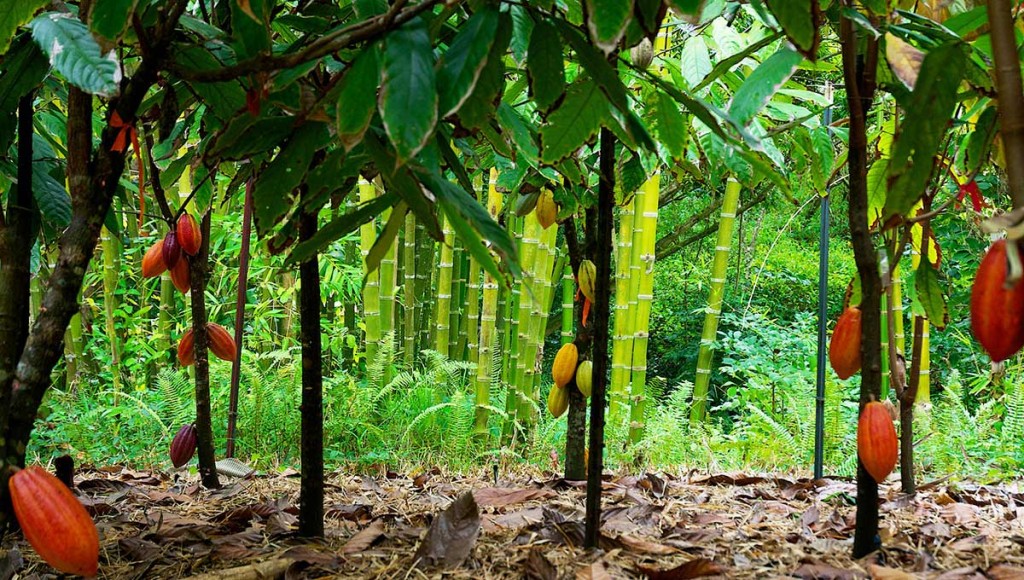It’s a rare thing these days to come across a spirit that defies inclusion in any existing category. Thanks in large part to the craft distilling movement, it seems like American drinkers have been exposed to nearly everything—mezcal, baijiu, and a whole host of weird liqueurs from all over the world have been steadily working their way into the mainstream for the last decade. But for the folks at New World Spirits, there’s still plenty of room to expand our horizons. With their flagship spirit, Solbeso, they want to turn Americans’ understanding of cacao on its head.
We sat down with Tom Higbee, Founder and CEO of New World Spirits, to learn about how his company grew from a moment of inspiration on a Peruvian farm into an operation that spans four countries. But first, we had to understand what, exactly, this new spirit was.
Discovering Cacao
As you may know, cacao trees are responsible for one of the most valuable (and widely-adored) commodities in the world: chocolate. Their oblong, ribbed fruits contain a plethora of seeds that can be roasted, ground into powder, and turned into anything from chocolate bars to cocoa bitters.
What may be less obvious, however—at least to those of you not from South or Central America—is that cacao pods also contain a soft, citrusy fruit that is generally discarded as a by-product. “The fruit is very citrusy and creamy, almost like a sorbet,” Higbee told us. “But nobody knows that.”
Higbee was first introduced to this conundrum when he took a trip to Peru to help out a friend. “My friend had a small cacao farm in the north of Peru, not too far from a place called Tingo María in the northwest. It’s more or less the ancestral home of cacao fruit, where the species really developed. So I’m there helping this guy out, and I’m watching them take the machete and knock the pods off the trees. They crack open the husk of the fruit, which has the consistency of an acorn squash, this meaty outer shell with the fruit inside.
“But all the farmer cares about is the bean that’s enveloped in the fruit. So they’d scrape out the fruit, and some of them would eat it out on the farm, the kids would drink the juice. And after about three days of this I asked, why don’t you do something with the fruit? It doesn’t make any sense. And down where I was, at first they were taking the fruit and throwing it into the river!”
Part of the problem is that, shortly after harvesting, the fruit becomes something of a nuisance to the farmers. “It’s very, very perishable,” Higbee explained. “Once you get that pod cracked open, the fruit, like an apple, will oxidize in about five, six hours. It goes bad really quickly.
“So I asked, why don’t you take the fruit to market or something? And they said, well, you really can’t because the fruit will oxidize and it doesn’t look very good. It turns brown and gets a little bit slimy. I asked why they don’t just give it to the animals, then. Well, they said, you can’t, because the animals get drunk, and no farmer wants drunk goats. And then it occurred to me: wait a minute, if it ferments, you can distill it!”
What is Solbeso?
While that thought wouldn’t be obvious to everyone, it makes sense that Higbee’s mind would go straight to spirits. He’s spent much of the last 25 years working in brand innovation for the alcoholic beverage industry—essentially, when a company wanted to launch a new product, he would help them figure out how to sell it. He’s been a hobbyist distiller for a number of years as well, and jumped at the opportunity to experiment with an entirely new product category.
“So we made a moonshine still with a clay top and bamboo, and we boiled up a batch of this stuff down in Peru. I thought it tasted pretty darn good. I didn’t know if it was safe or not, but I figured I’d give it a go,” Higbee said, laughing. “I took two bottles back to the US, just regular water bottles, and I took one to a laboratory up in Oregon. It was about 70 proof at that time—the spirit is 80 proof now—and they said it had a bit of natural caffeine in it, which is great. It has also has tiny, trace amounts of theobromine, which is the mood-enhancing stimulant that’s in chocolate.”
While they don’t claim that Solbeso imparts any health benefits, drinking the juice of the cacao fruit is a tradition that goes back centuries, if not millennia. “Up until the time of Spanish colonialism, cacao was a beverage, the beans weren’t used to make chocolate. People drank the juice because the caffeine and the theobromine gave them a bunch of energy—and, frankly, it’s a vasodilator as well, so it had that sort of natural Viagra thing going on,” he said with a chuckle.
“We found this picture of Montezuma drinking cacao juice that was captioned something like, ‘Consumed before battle, or more amorous conquests,’ and while it was kind of funny it was also very cool to learn that this was such an ancient tradition. We’re taking a really historic beverage and distilling it into something a little more modern.”
Technically, Solbeso is an eau-de-vie—a brandy made from fruit—but Higbee is quick to point out the differences. “It really doesn’t behave like an eau-de-vie, in the bottle or in the glass. It really is its own animal.” The nose is citrusy and grassy, with subtle notes of tropical fruit, and there are hints of pear and apple on the palate. Unfortunately for those of you who have never tried it, the flavors are best described as strongly reminiscent of, well, cacao fruit.
A Supply Chain in the Amazon
Since the fruit is so difficult to transport, New World Spirits’ first challenge was figuring out how to even make the stuff with any degree of consistency. “We’re turning this waste product into something that’s usable, and we’re really proud of that,” Higbee said. “Down in Peru, these are subsistence farmers with relatively small plots of land. All of a sudden, they’re making 10-15% more money for no additional work.
“We learned the hard way, though, that you can’t do anything that’s going to mess with they way they’ve done things for hundreds of years. You’re talking about farms that have been the same for five, six, seven generations. We bought a centrifuge, this thing that spins around and separates the beans from the fruit, but what it ended up doing was disenfranchising the women whose job it was to squeeze the fruit and separate the beans. They have a way of doing things that you have to respect.
“So we ended up adapting our process to the way that they operate. Take our juice collection techniques, for instance. We built these angled tables, and at the bottom of the slope of each table is a drain, like pockets on a pool table. The juice drains off in the process of separating the beans from the fruit, and now, rather than being thrown away, it ends up being collected in buckets. It innovates within their process without disrupting it.”
Higbee and his team also try to keep their production as straightforward and unadulterated as possible. “It sounds like marketing speak—and I guess that’s because it is—but we like to say that our production process is branch-to-bottle. In the same day, we go straight from the farm to these open-air fermentation tanks. The name Solbeso actually comes from that process—sol means sun, and beso comes from the verb “to kiss.” It’s not proper Spanish, but you get the idea,” he laughed.
“After one day of fermentation, it’s ready to be distilled. There are no additives or other processes involved. It just goes from fruit on day one, to fermented product on day two, to distilled product on day three, and then we ship it to the US where we filter and bottle it.”
There are numerous other issues when it comes to producing a spirit from cacao. First, there’s the simple fact that cacao trees have varietals. Fruit that comes from Solbeso’s farms in Peru tastes quite different from those in Ecuador or the Dominican Republic, and it takes some impressive blending chops to ensure that each bottle sticks to the same flavor profile. There’s also the terroir—the influences of the local environment and annual weather patterns that create subtle differences from year to year.
A New Spirit Category
Those challenges are all part of the fun for Higbee, though, and he revels in the fact that their process is so rustic. “We’ve found that the cacao that makes the best chocolate also makes the best Solbeso. Rather than the big fruits that are easy to work with on an industrial scale, we need to work with the really flavorful, small, aromatic fruits that aren’t grown on massive farms.
“They’re scattered on a hill somewhere in Venezuela. So when people ask us if our product is fair trade and organic, I kind of laugh and pull out a picture. It’s wild. Literally. People just go out in their backyard and pick a few at a time.”
One thing that has proven a bit less difficult than the New World Spirits team anticipated, though, is generating interest in an entirely new product category. “It’s interesting, when tequila first came to the United States it was positioned mostly as a Mexican whiskey, because Americans had no idea what it was. This is no different.
“Yes, it’s a new product, and for those who know cacao it’s easy, but among our consumers—this was their idea, not ours–they’ve been calling it a tropical tequila. Its use, its profile, its flavor… it’s got a little more of that tropical sweetness to it. We know it’s not tequila, obviously, and in the clever craft bars of San Francisco that might not fly,” he laughed, “but by and large it’s the easiest way to introduce new consumers.”
In our own experiments, we’ve come to a similar conclusion. The cocktails Solbeso suggests, like the Birds and the Bees, the Beso Picante No. 2, and El Conquistador, play on everything from classic brandy drinks to the Manhattan. But in a classic Margarita or Daiquiri, the citrus blends beautifully.
What’s Next
Higbee and New World Spirits aren’t afraid of branching out into untested markets, but for the time being they’re focusing on building Solbeso’s profile in the United States before they launch any new products. “In the future, you can definitely expect a barrel-aged product from Solbeso. As a spirit, it does really well on wood. In general, though, our goal is to do things that are new to world brands, that bigger companies can’t do.”
Knowing Higbee’s creative spirit, it’s likely that whatever his team comes up with next will be just as inventive as their flagship bottle. Whether that’s another eau-de-vie from an obscure South American fruit, or a product from a different category altogether, the only thing we can be sure of is that we won’t see it coming.
“I always laugh when someone in the industry says there’s nothing new under the sun,” Higbee said. “I tell them they need to get out of the office more.”
You can purchase Solbeso directly via their website, or use their handy store locator to find other online or brick-and-mortar liquor stores.
All Photos: New World Spirits
